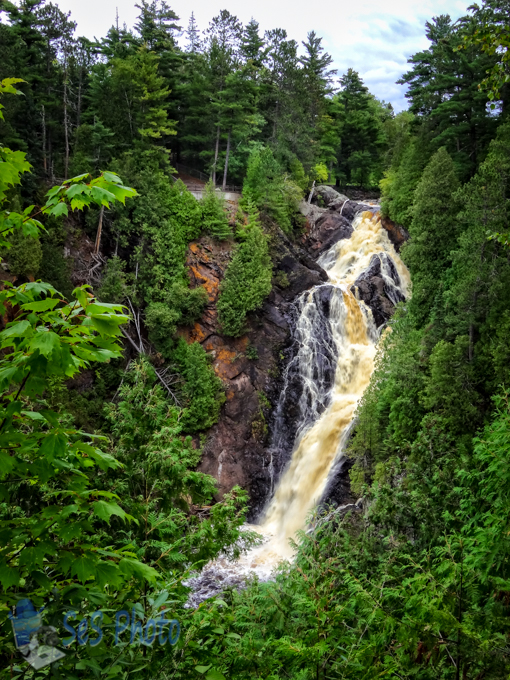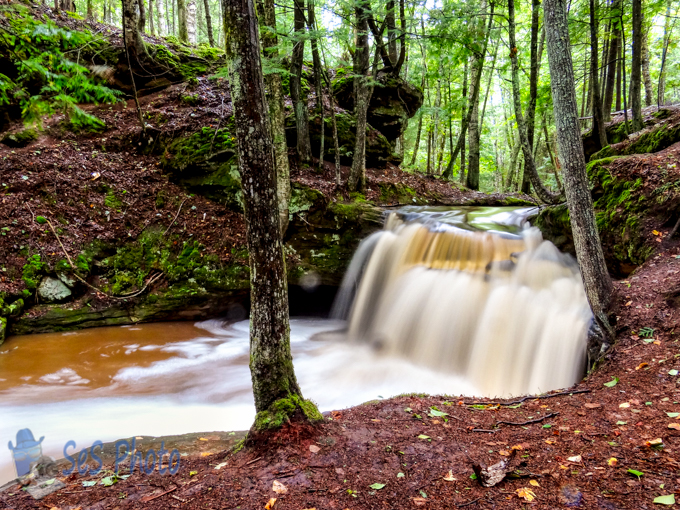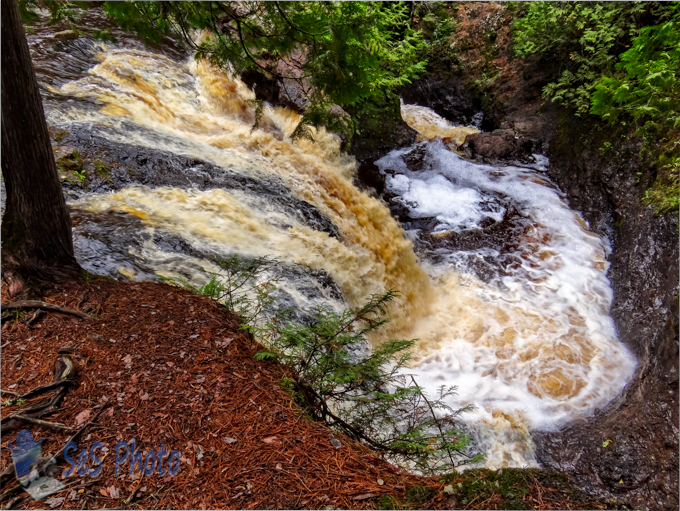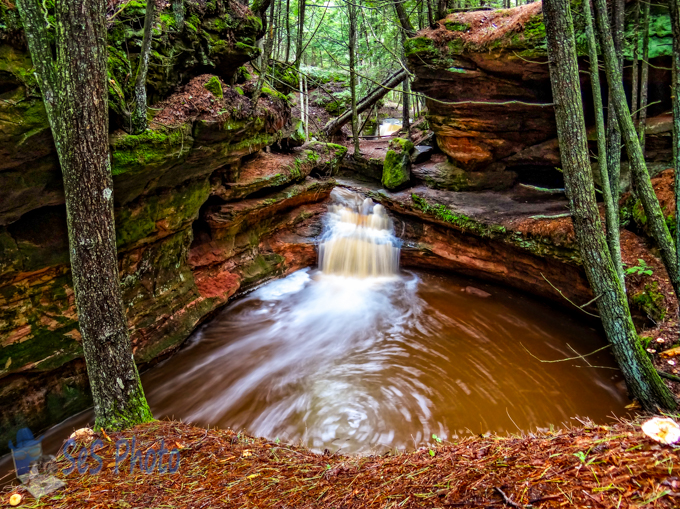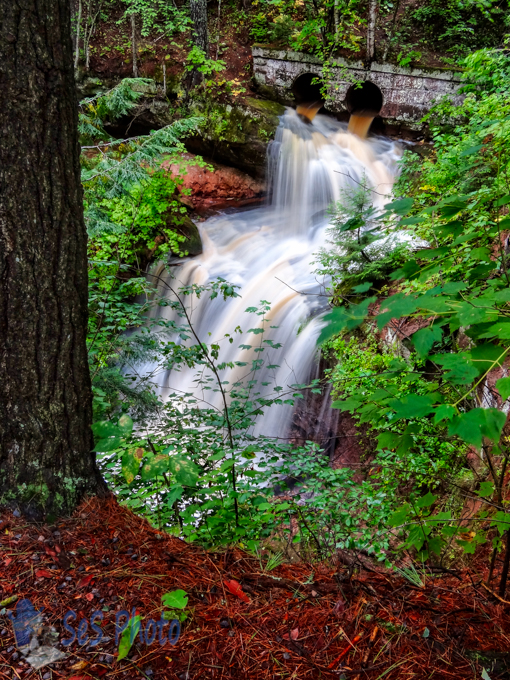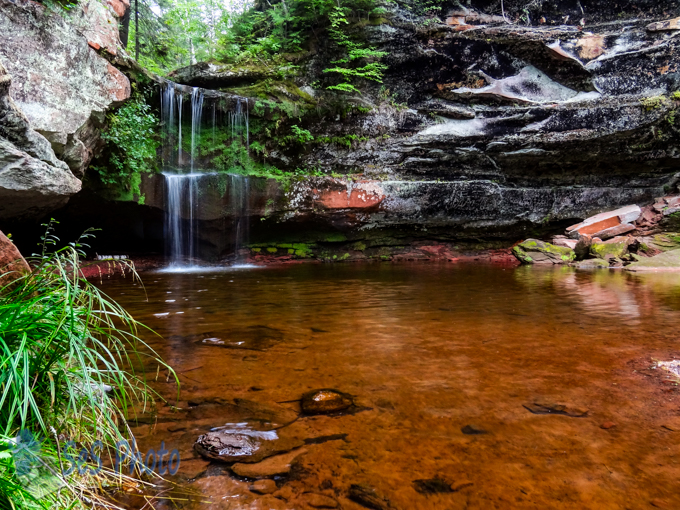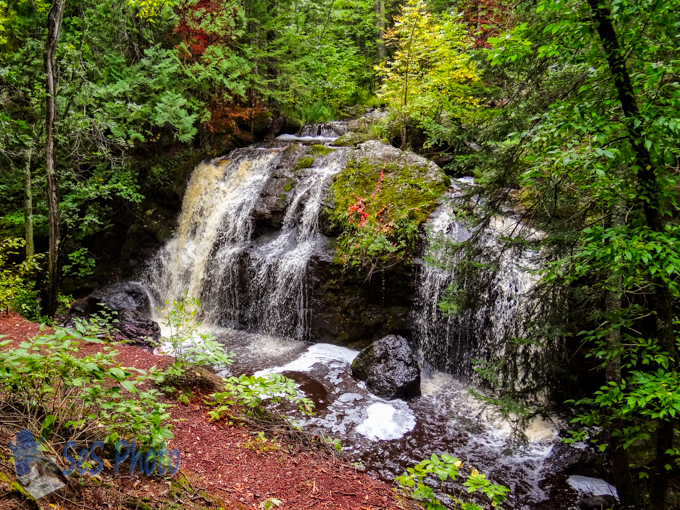A picture just doesn’t do justice to the 165 foot Big Manitou Falls waterfall, the tallest waterfall in Wisconsin and the fourth tallest east of the Rockies. It is only two feet shorter than Niagara Falls, but it is a lot ‘skinnier’ although it still rumbles as the water plunges to the bottom.
Both the Big Manitou Falls and Little Manitou Falls are on the Black River located in Pattison State Park. In the tumbling waters of Big Manitou Falls, the Ojibwa believed they heard the voice of the Great Spirit within the roaring of the falls and gave it the name “Gitchee Manitou”.
If it wasn’t for a lumberjack and miner from Michigan, I might have never had the chance to see this waterfall since there was plans to build a hydroelectric dam on the river which would’ve destroyed the waterfall. Martin Pattison blocked the development by secretly purchased 660 acres along the river from a number of landowners and became a state park in 1920.
Big Manitou Falls
